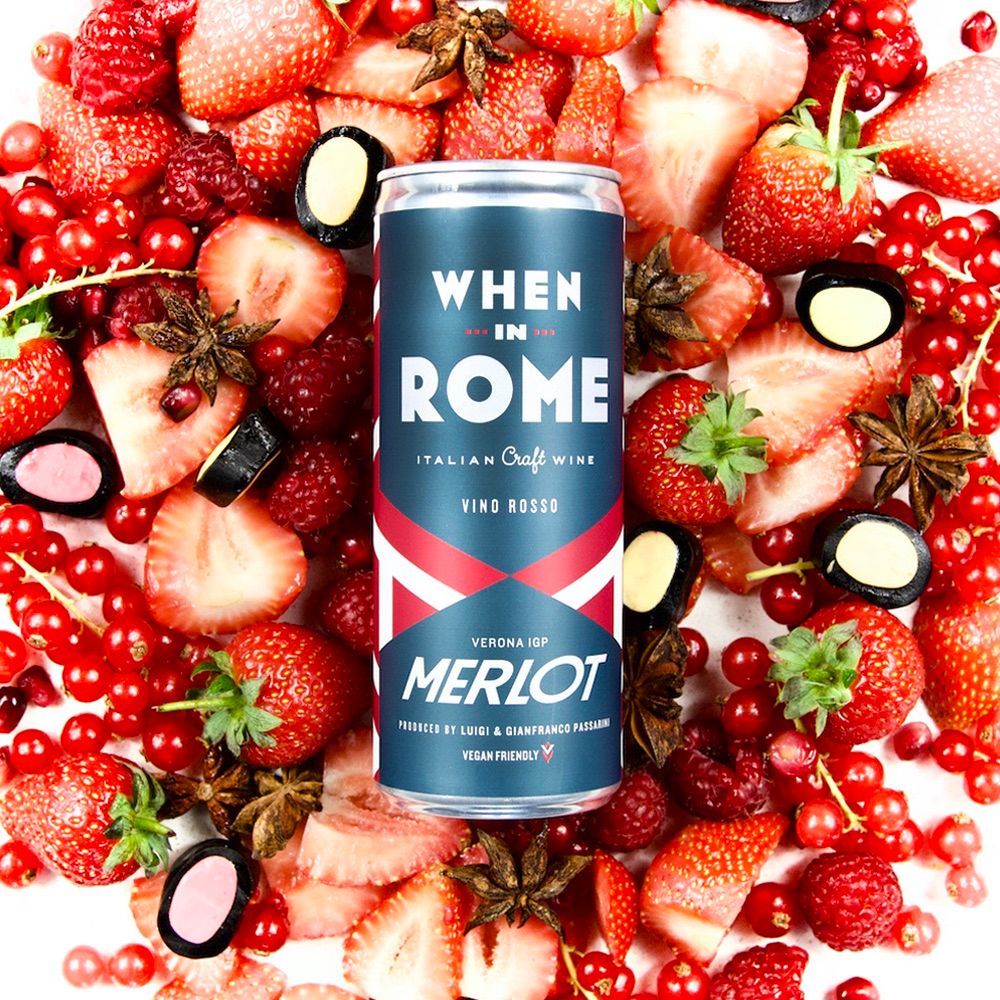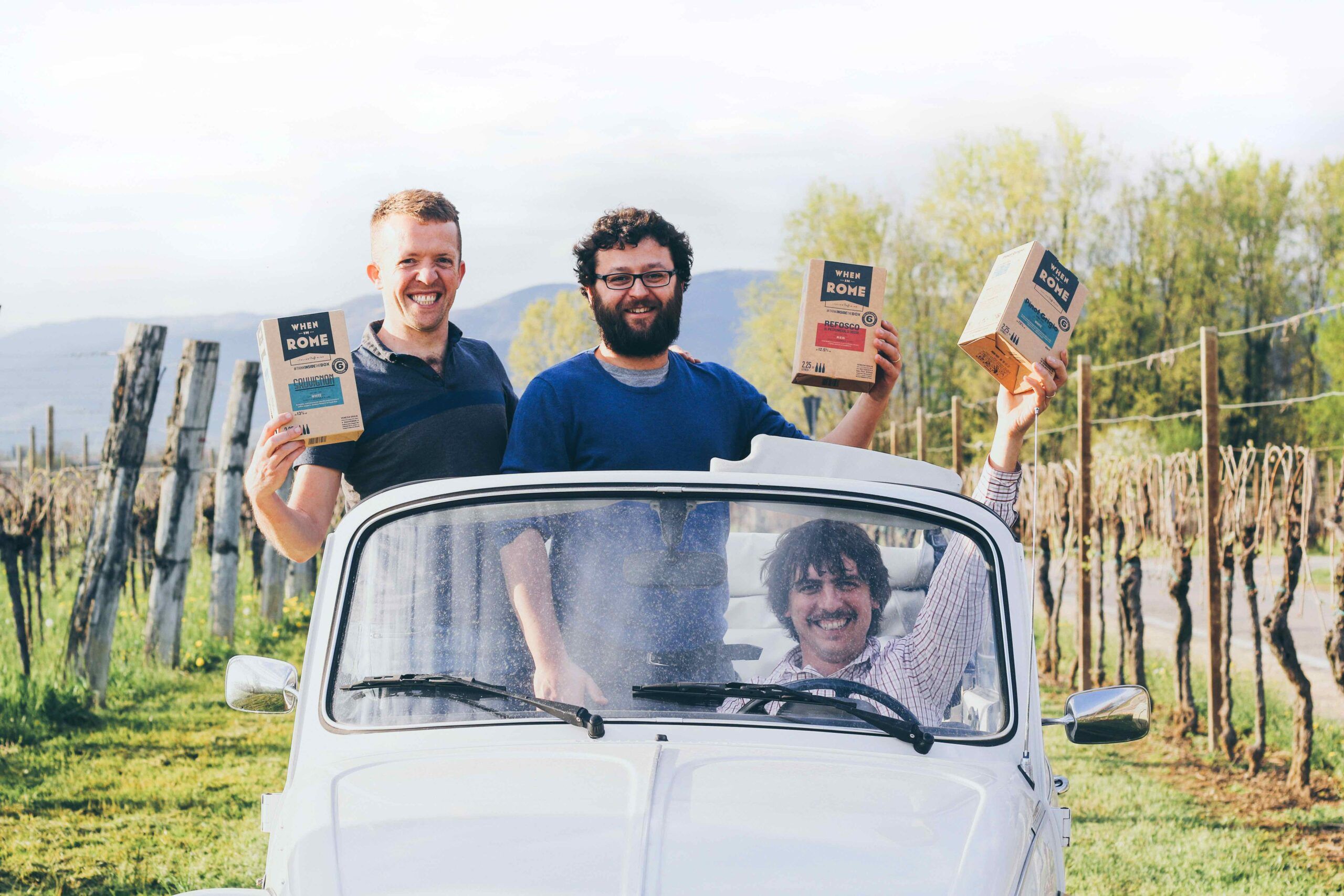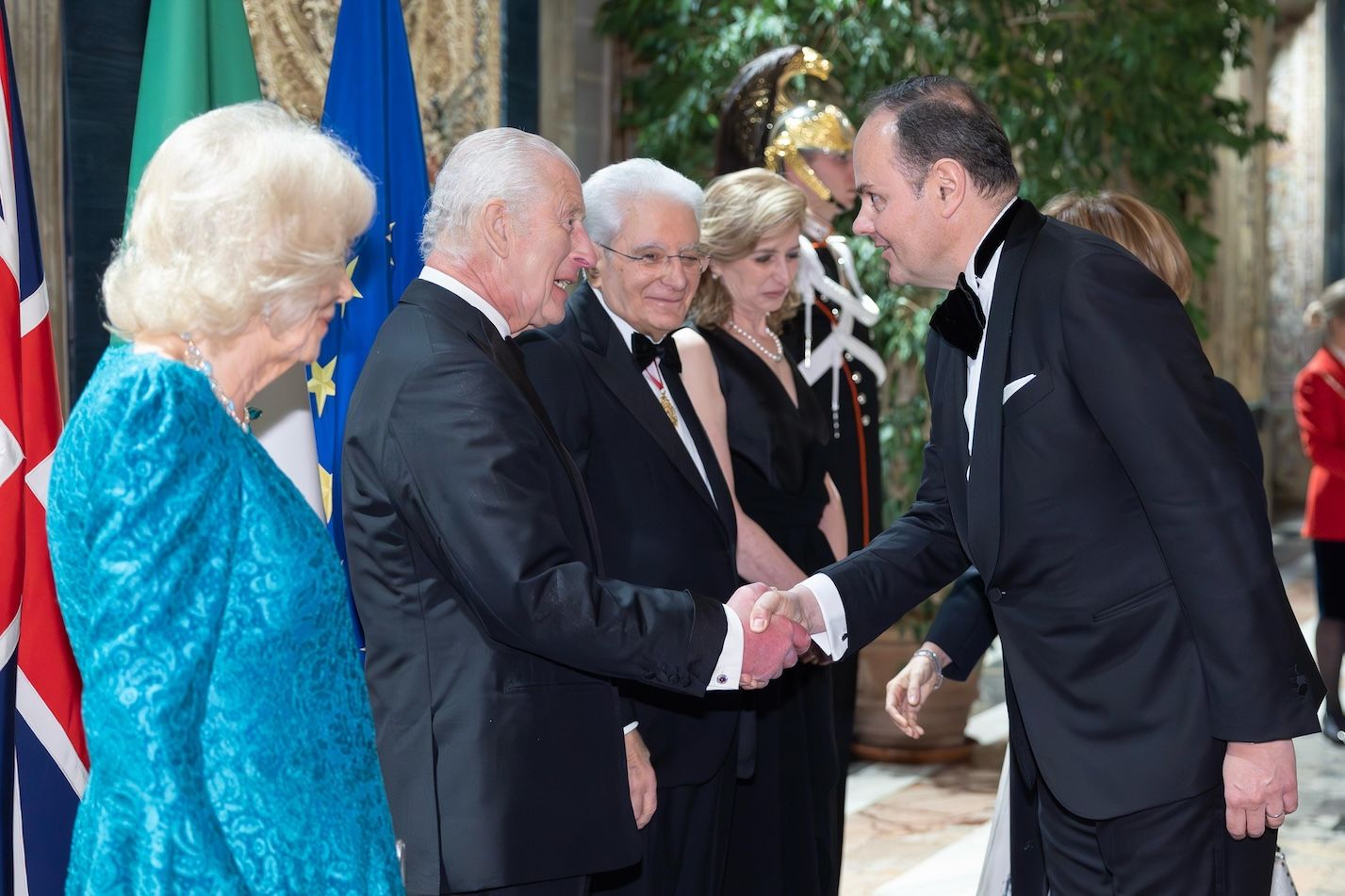Bag-in-box wines sell by their millions in Scandinavia and parts of northern Europe. The team behind When in Rome is determined to help make the case for sustainably packaged wine in the UK.
We have heard a lot in recent weeks of a need to return to “conviction politics” – whatever that might mean. It’s a phrase that comes to mind when looking at the impact that When in Rome is looking to have on the traditional wine industry. This is not just another Italian wine brand claiming to have the best grapes ever picked from a particular region, or in a certain style.
No it’s coming at the sector from a completely different angle. One that puts sustainability and doing things in the right way front and centre of everything it does. A wine brand that has a conviction to change the way we currently buy and sell wine.
It’s an ambitious and brave strategy to take, as it also almost having to create a category that still does not really exist in even such a mature wine market as the UK.
Bag-in-box. Alternative packaging. Call it what you want, it has been knocking around the wine aisles for years, but never made the impact it has in other parts of the world. Particularly in Australia where people have, literally, been dining out with boxes of wine for decades. Or parts of Scandinavia where there is sometimes more cardboard to be found in a wine department than glass.

When in Rome looks to bring premium, interesting Italian wines packaged in alternative formats to the wine market
The idea behind When in Rome came when Rob Malin, who happened to be in Milan for a foreign exchange conference, decided to take a break from his day job dealing with high level financial matters and have a wonder around the city centre. He happened to wander into a wine shop – La Bottega del Vinaiolo – that had an unusually large selection of bag in box wine on display.
“I thought I like the look of that. That could work in the UK,” he says. “And that was it. That was my inspiration to work in wine.”
He started talking to the shop’s owners – Andrea Marchesi and Lorenzo Canali – and suggested why don’t they try and do what they were doing in Italy, but in the UK and he would help help make it happen.
He promptly gave up his high salary trading foreign currency to swap it trying to sell boxes of wine at farmers markets at the weekend. “I did it for one winter and it nearly killed me – it was just so cold,” recalls Malin.
Making a difference
One thing the When in Rome team has undoubtedly got right is it name. It captures the slightly maverick, left field approach it is taking to wine. A wine brand that does not take itself too seriously, but one that has serious ambitious and wants to address serious issues.
Malin admits it was actually a brand consultant who came up with the name during a very early session in its planning days. Whilst he could not afford to keep the brand consultant on, the name stuck. “So it was money well spent,” says Malin.

When in Rome got its first break with a listing in Waitrose
The three co-founders also shared a passion for sustainability and for running a business together that had clear environmental goals and ambitious. Malin admits it is still very much at the start of that process and there are many areas it needs to improve on – including ensuring its producer suppliers are as sustainable as possible.
But it meant the three could come together under the same vision for the brand and business. Particularly as Marchesi and Canali were already working with producers in Italy who were able to work with bag-in-box packaging.
First break
It is also a vision and mission that an increasing number of wine businesses are wanting to follow. Which is how When in Rome got its first break thanks to Victoria Mason, who at the time in 2017 was in charge of developing new format and packaging ideas at Waitrose.
“She came across us on Instagram and got in touch to see if we could work together. That was such a big break for us,” says Malin as it not only gave them their first major listing, they were able to work with the Waitrose team on finessing the labelling and design of the bag-in-box.
He is hopeful of getting When in Rome into other multiple accounts and has had lots of good talks, but as yet no-one has taken the bite. “They all know who we are,” he adds.
Working with Waitrose means it does get some “push back from independent wine merchants” but Mailn hopes more will see the sustainable, quality and premium credentials behind the brand and give it a go.
Malin is not sure if price is an issue, but he is adamant that for When in Rome to work for itself and its producers it has to be marketed and sold at a premium price – the average retail selling price is around £25, when there are other bag-in-box wines in the market for closer to £15 and discounted from three. But he says they are proud of the quality of the wine and are confident the price more than stands up.
“We are a high end table wine and know we are premium for bag-in-box. We are not though perhaps the brand for a Valentine’s Day dinner,” he says.
Paper bottle hopes

When in Rome is now using innovative packaging technology to offer premium Italian wine in a paper bottle
It now hopes to take the business to another level by introducing a paper bottle using the format developed by Frugalpac. Malin says the paper bottle has the advantage of carrying similar carbon foot savings as its bag-in-box, but as it is made from 94% recycled paper it can claim to have a carbon footprint that is 84% less than an average glass bottle.
Interestingly, says Malin, the paper bottle works by having a similar plastic lining device to a bag-in-box inside the bottle allowing it to be safely and securely stored.
“The big difference being the price comes down dramatically and gets over the problem of people not wanting to buy that much volume of wine in one go with a bag-in-box. They are also very tactile and people just love picking it up off shelf.”
The move to paper bottle certainly opens up new market opportunities, including getting listings in the on-trade, says Malin.
Good wine vs sustainability
Malin admits he has had the wind taken out of his sails somewhat since launching When in Rome when it comes to the sustainability message. Whilst you might imagine that is the main reason people are buying into the brand – it’s not.
“As long as the wine tastes good and is good value, that is what people care about,” says Malin. “You can’t build a business around the fact people are going to be willing to pay more for a product because it is a box and it is good for the environment. We are not going to change the world by having a niche wine brand.”
He adds: “Equally people don’t see glass as a problem. That is a measure of the challenge we have.”

When in Rome has also introduced a range of canned wines
The vast majority of people are interested in the quality of wine and where it comes from. Whatever people might say about the environment it is not backed up with what they buy and Malin can’t see that changing until products are taxed on their carbon output.
But it is still important that a brand like When in Rome sticks to its principles and sets out the facts and looks to change people’s perceptions one wine – and one bag-in-box, or paper bottle, at a time.
“There are lots of moving parts as a start up that you have to be on top of and wine is a very low margin industry and is very risky for start ups,” he adds admitting it has yet to turn a profit.
“We have a job to do to win over the consumer and convince more trade buyers. We get pushed back all the time.”
He is hopeful other producers and distributors follow suit and look at the paper bottle as a potential long term solution. He says it is nice to have a point of difference at the moment, but When in Rome actually needs three or four other brands to get behind the paper bottle “for it to become a category in its own right”. “We don’t want When in Rome to be the only paper bottle in the market,” he says.
Celebrity appeal
Someone who can really help take When in Rome and the alternative packaging category go to another level is the TV broadcaster and co-host of ITV’s This Morning, Philip Schofield.
He has teamed up with Malin and his team to create his own bag-in-box wine brand. “He is genuinely interested in both the wine and the packaging we can use for it.”

TV presenter Philip Schofield was so taken with When in Rome’s packaging and wines that he has put his name to an exclusive range
In fact the two headed to the House of Commons recently to take part in a MPs reception, in partnership with Frugalpac, to extol the virtues of paper packaging and how it could be a good British export business story.
“He is a very good partner for us. It was lovely to take him to the London Wine Fair and see the buzz that he created there.”
When in Rome’s is now looking to widen the distribution for its paper bottle format and build on the success it has so far had in Ocado. “We are talking to lots people so hopefully we can get it over the line,” he says.
Interestingly three-quarters of the interest in the paper bottle has come from outside the UK and Malin says it might well work better first in export than it does in the UK. It is already selling its bag-in-box wines in Italy, Canada, Finland, Sweden and Canada amongst others.
“It is challenging working in this part of the market. But we love running this business and what it stands for and we also love working in the wine industry. It is so friendly and welcoming. But then you also know you are only one quality control issue away from bankruptcy.”
Spoken like a true drinks entrepreneur.
- You can find our more about When in Rome at its website here.










































